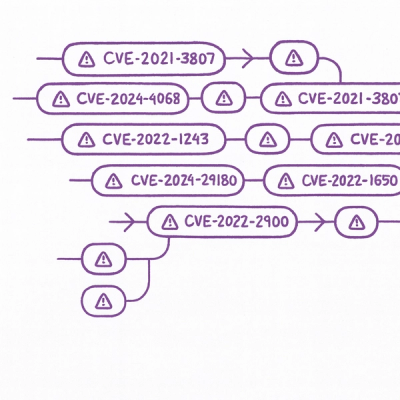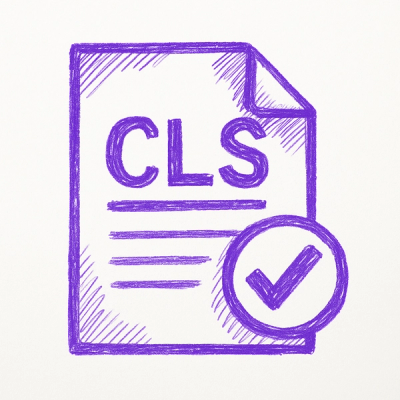
Security News
Static vs. Runtime Reachability: Insights from Latio’s On the Record Podcast
The Latio podcast explores how static and runtime reachability help teams prioritize exploitable vulnerabilities and streamline AppSec workflows.
react-autolayout
Advanced tools
Auto layout for React using Apple's Visual Format Language
Auto layout for React using Apple's Visual Format Language. React-Autolayout is a wrapper around the AutoLayout.js library.
NPM:
npm install react-autolayout
Bower:
bower install react-autolayout
Script Tag:
<script src="path/to/react-autolayout/build/react-autolayout.js"></script>
(Module exposed as ReactAutoLayout)
class Demo extends React.Component {
query(constraints) {
if('demo' in constraints){
if(constraints.demo.page.width < 600){
return 'narrow';
} else {
return 'default';
}
}
return 'default';
}
render() {
return (
<AutoLayout name="demo" query={this.query}
layout={[
{
name: 'default',
constrainTo: 'viewport',
format: ['|~[page(90%)]~|',
'V:|-15%-[page]-150-|']
},
{
name: 'narrow',
constrainTo: 'viewport',
format: ['|~[page(60%)]~|',
'V:|-15%-[page]-150-|']
}
]}>
<div viewKey="page" >
...
</div>
</AutoLayout>
);
}
}
name: stringThe name prop defines a region that will have auto layout applied and is used to identify the region. It is required and must be unique.
layout: array[object]layout holds an array of layout configuration objects. The different configurations get applied in response to query changes (see next). Each configuration object must have the following 3 properties:
name: string is used to identify the configuration.constrainTo: string | array specifies which view the layout region should be contrained to. There are three possible values:
'viewport' contrain to the window'${name}.${viewKey}' constrain to another view[width, height] constrain to a fixed width and height in px. Width and height are specified as a number without the px suffixformat: array[string] takes an array of string specified by the Visual Format Language. Please refer to AutoLayout.js documentation for usage.query: function -> stringquery(constraints, currentFormat){
if('demo' in constraints){
if(constraints.demo.page.width < 600){
return 'narrow';
} else {
return 'default';
}
}
return 'default';
}
The query prop takes a function that returns a string representing the name of the layout to be applied. It can be thought of as a custom media query in which you specify the break points based on the criteria you determine.
The query function will receive two parameters.
The first is constraints. constraints holds the current state of all autolayout objects. You are able to reference view styles to determine breack points. The shape of constraints is ${name}.${viewKey}.width|height
The second is currentFormat. This is a string that stores the current format applied to the region.
htmlTag: stringThis is an optional prop that allows you to specify the type of html element to use for the region.
<AutoLayout>
<div viewKey="child1" >
...
</div>
<div viewKey="child2" >
...
</div>
<div viewKey="child3" >
...
</div>
</AutoLayout>
Child elements define the view to be laid out. You can have as many child views as required. Child elements cannot be React Components and must be the first level element within AutoLayout. A view has the following props:
viewKey: string The viewKey is used within the Visual Format to identify the view. viewKey's must be unique within a Component and is a required prop.formatStyle: object is an optional prop that specifies styles to be applied to certain layouts. You do not need to specify every layout, only the ones that you would like a style aplied to. The format style is then merge with any existing styles set on the view.An example of a formatStyle prop within a view is:
<div
viewKey="child2"
formatStyle={{
narrow: {
backgroundColor: 'black',
zIndex: 10
}
}}>
<div>child2 Text</div>
</div>
Z property is not availableFrank Panetta - Follow @fattenap
Copyright (c) 2015 Frank Panetta
Permission is hereby granted, free of charge, to any person obtaining a copy of this software and associated documentation files (the "Software"), to deal in the Software without restriction, including without limitation the rights to use, copy, modify, merge, publish, distribute, sublicense, and/or sell copies of the Software, and to permit persons to whom the Software is furnished to do so, subject to the following conditions:
The above copyright notice and this permission notice shall be included in all copies or substantial portions of the Software.
THE SOFTWARE IS PROVIDED "AS IS", WITHOUT WARRANTY OF ANY KIND, EXPRESS OR IMPLIED, INCLUDING BUT NOT LIMITED TO THE WARRANTIES OF MERCHANTABILITY, FITNESS FOR A PARTICULAR PURPOSE AND NONINFRINGEMENT. IN NO EVENT SHALL THE AUTHORS OR COPYRIGHT HOLDERS BE LIABLE FOR ANY CLAIM, DAMAGES OR OTHER LIABILITY, WHETHER IN AN ACTION OF CONTRACT, TORT OR OTHERWISE, ARISING FROM, OUT OF OR IN CONNECTION WITH THE SOFTWARE OR THE USE OR OTHER DEALINGS IN THE SOFTWARE.
FAQs
Auto layout for React using Apple's Visual Format Language
We found that react-autolayout demonstrated a not healthy version release cadence and project activity because the last version was released a year ago. It has 1 open source maintainer collaborating on the project.
Did you know?

Socket for GitHub automatically highlights issues in each pull request and monitors the health of all your open source dependencies. Discover the contents of your packages and block harmful activity before you install or update your dependencies.

Security News
The Latio podcast explores how static and runtime reachability help teams prioritize exploitable vulnerabilities and streamline AppSec workflows.

Security News
The latest Opengrep releases add Apex scanning, precision rule tuning, and performance gains for open source static code analysis.

Security News
npm now supports Trusted Publishing with OIDC, enabling secure package publishing directly from CI/CD workflows without relying on long-lived tokens.